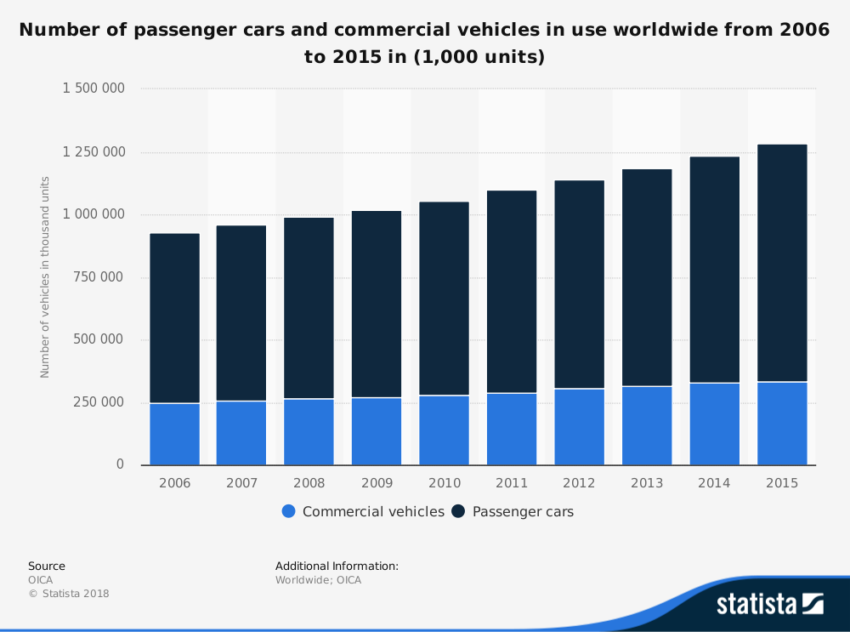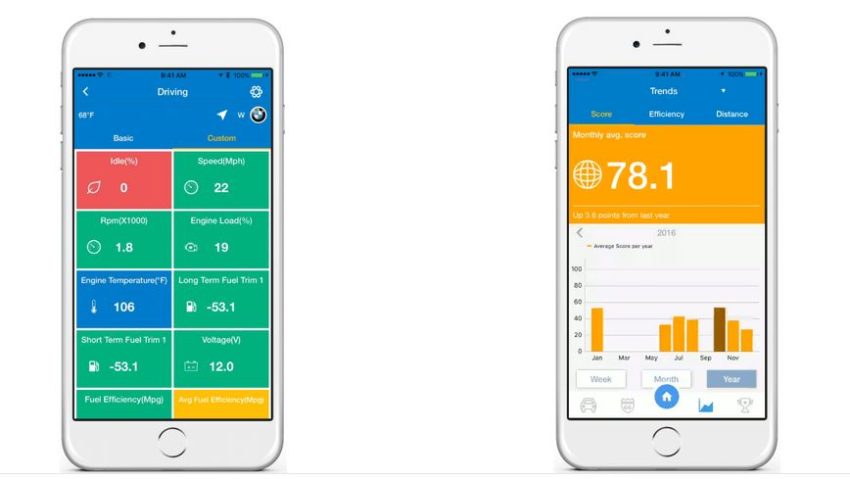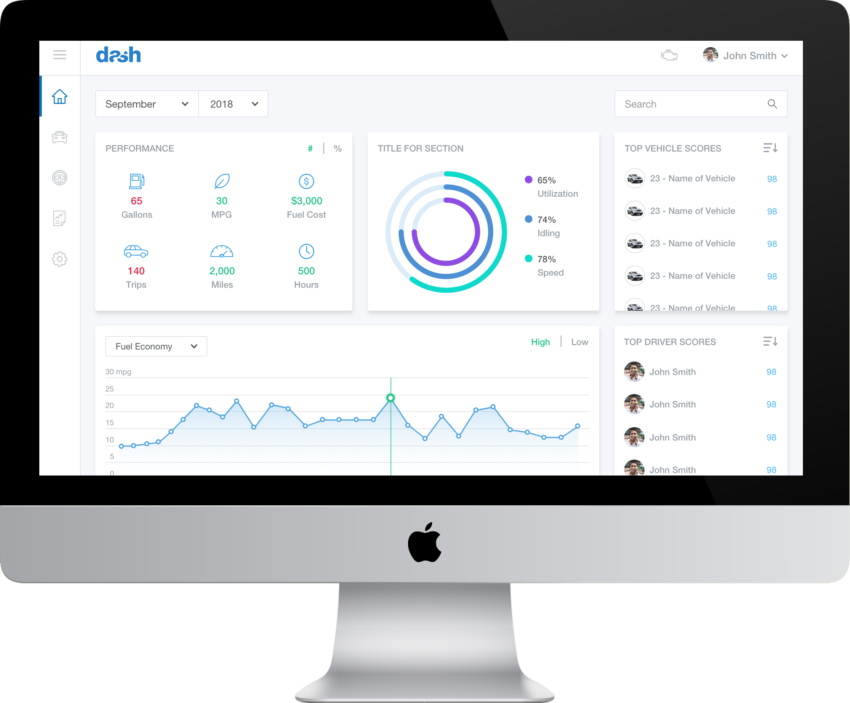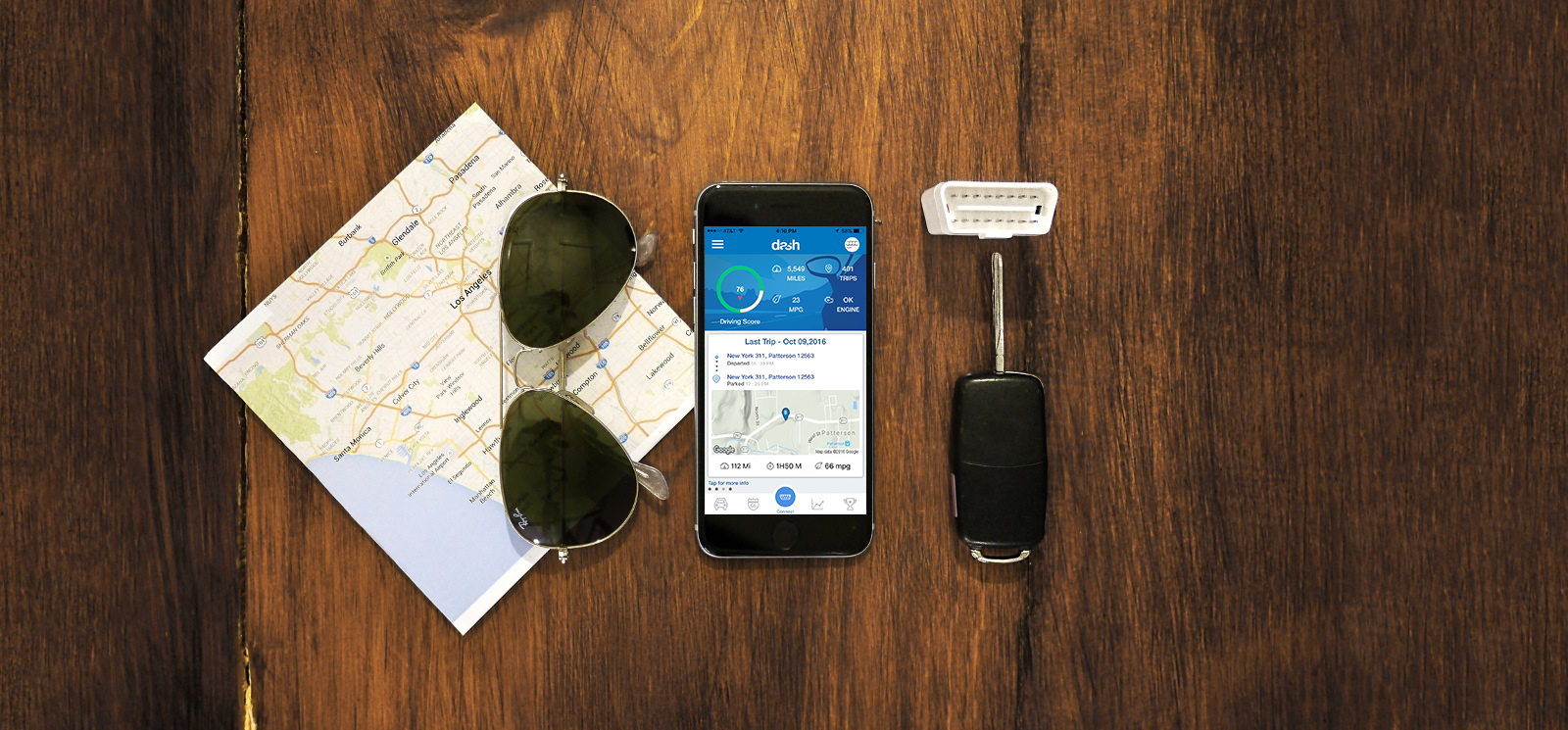For the last few years, the subject of autonomous vehicles has dominated headlines and has been the principal focus of the tech community. Significant progress has been made in the field over a short period of time. Major car-makers are scrambling to keep up with their competitors—some even forming unconventional partnerships in order to stay in the race. Others, resort to stealing proprietary technology to catch up with the industry leaders. One thing is for sure: everyone wants a piece of the pie that is our driver-less future, and the whole world is watching.
However, as a consequence of the commotion around autonomous driving, the automotive tech community has developed tunnel vision. Everyone wants to be first in producing technology for the future, but few seem to care about creating technology for objects of the past.
According to the International Organization of Motor Vehicle Manufacturers, the number of vehicles currently in use around the world is around 1.3 billion. On top of that, tens of millions of cars are being produced every year.

The vast majority of these cars will not be adapted for autonomous driving. The world will not just discard these vehicles and transition to autonomous vehicles overnight. But rather, the shift to a driver-less world will take decades—and even then there will still be some outdated vehicles on the road. The reality of automotive vehicles will be one in which intelligent, autonomous vehicles have to share the road with older, unintelligent models driven by erratic drivers.
Dash Labs Inc., a startup in New York City, has come up with a solution that makes the vehicles—and drivers—of today more intelligent and more efficient by leveraging the troves of data that your car produces during every drive. The company organizes, visualizes, and analyzes this data by obtaining it through a plug-in that is easily connected to the diagnostics port present in cars manufactured after 1996. While the data is mainly used by mechanics to find problems with the vehicle, it can also be relayed to the driver and provide them with a more sophisticated and safe driving experience.
The company, founded in 2012, has partnered with corporate giants such as Ford, Allstate, and Subaru. Dash is currently rolling out its fleet management technology and is looking to further expand its services to individual consumers and commercial enterprises.
Jamyn Edis, the CEO and co-founder of Dash, sat down with Impakter Magazine in order to share the startup’s story, its impact, and its place in the automotive industry of the future.
*Side note: Dash Labs has one of the most exquisite websites that you will see. Check it out!
How was the company founded?
Jamyn Edis: During my time at HBO Sports I was part of a boxing project, where we were putting censors on boxing gloves in order to interpret the physical movements of the boxers, as well as the forces and speed of punches. That is where I met Brian Langel, my co-founder, who did the software part of the project. Brian also had a side project where he was creating science research equipment where he was helping scientists track the migration of wildlife.
At the time, the things that excited us were big data, the internet of things, and putting censors on everyday objects. It was interesting to create exhaustive data around things that were not just physical exercise, as Fitbit and Nike Shield were doing at the time. This made us ask: what else do people do a lot of? Driving. We then became obsessed with the idea of improving the driving experience by collecting data. We had frustrations with how all the data that was being generated by cars was either black box, ephemeral, or under the hood of the vehicle. We wanted to unlock that data and hand it over to the consumer. With that data we could give them a set of tools to help make driving smarter, safer, greener, and more affordable to people. We were passionate about this idea. We left HBO that summer and in 2012 we started Dash.

What was the inspiration to stick with this idea and to bring it to the market?
J.E.: What got me and Brian out of bed every morning was that we believed that our technology and data could make the driving safer, greener, and more affordable for people. Cars kill about 1.259 million people a year. In the U.S. there are about 4 million accidents and 35 thousand deaths on the road every year that are preventable for the large part.
Our strategy was to do anything that we could do in order to make sure that people don’t speed as much or are more fuel efficient, reducing the use of fossil fuels and the carbon foot print. All of that was what would make us jump out of bed everyday— we were doing more than just trying to build a for profit company.
What was the process of going from the idea to the physical manifestation of the product?
J.E.: Brian and I are currently adjunct professors at NYU. Brian teaches at the Tandon School of Engineering and I teach MBA students at the Stern School of Business. In the summer of 2012, I put out a call to my most recent clients who graduated and told them that we were incubating a startup idea. That way I got half a dozen former students working for us that summer, so it wasn’t just Brian and I at that point. Also, we were lucky that later on we got free space in NYU’s incubator space. That’s what got the ball rolling. We would figure out what the on-boarding was and what the features would be. Brian was building the website, creating an early version of the product on Android, and also sourcing the hardware.

The way that we get the data from vehicles is via this device called an On-board Diagnostics Device (OBD). If you ever look under the steering wheel of your car, you’re going to see this port that all vehicles since 1996 have. You plug your device into the port, right under the steering wheel—there are no screws and there is no wiring. It is super simple. And then you pair it over Bluetooth to your phone.
We started building our app on android and that is where we had a working minimal viable product (MVP). We put together the pitch deck to try and raise money. Having gone to business school I had a good network of contacts so the door was open for us and we had good-will from venture capitalists. They would take the meetings and show interest, but no one actually wrote a check. They wanted us to launch the product, come back, get some users, and tell us what they are doing with it first.
Fortunately, we were later accepted at Techstars, which is an accelerator program that is hugely competitive. We soon raised our goal of 1.2 million dollars, paid a salaried team, and launched our product in January 2014.
What was challenging about your business model?
J.E.: The Dash app is the consumer product that we are known for primarily. The app is available on android and iPhones for free. Users buy the plug-in devices, and from there we do everything from tracking driving data to providing behavior feedback to supplying predictive maintenance
Related Articles:
 Achieving Zero Traffic Fatalities Through Sustainable Safety
Achieving Zero Traffic Fatalities Through Sustainable Safety
 Scoop Carpooling in Seattle. Helping citizens during the “Seattle Squeeze”
Scoop Carpooling in Seattle. Helping citizens during the “Seattle Squeeze”
 Jump Bikes: The Electric Bike Sharing
Jump Bikes: The Electric Bike Sharing
It is important to note that we do not make the hardware. We use the hardware that is already sold in order to try and keep the costs as low as possible. For us the entire thesis of launching this product was to be able to earn driving data and vehicle performance data. We had to prove to our investors that we could make money. On the other hand, we needed to make sure that were offering something compelling to users so that they would hand over date from their driving accounts. We were a venture backed company, but needed at some point to demonstrate that there was a business model there.
Where is your product currently being used?
J.E.: We’ve been used by 500,000 people worldwide in over a hundred countries. The U.S. accounts for about 60% of those drivers. We did not want it to be just tech gear-heads who use this, but rather everyday drivers who use our product. Our biggest market is L.A., followed by San Francisco, New York, and Chicago. Our product is used most where people drive the most. Outside of the U.S. are big territories are UK, Australia, Canada, Germany, and France.
What are some figures regarding the impact of your startup?
J.E.: In terms of the impact, our drivers experience about a seven to ten percent increase in fuel efficiency. When you look at fleets and commercial drivers, the impact is profound. Cars are 95% underutilized as they are used for 5% of the day, mainly for commuting. Commercial vehicles have a much higher utilization rate, around 50 % to 60%. So if you are a fleet owner changing driving behavior positively and increasing fuel efficiency by 7% those are big savings. Truckers will spend on average $100,000 a year on fuel so that’s real money in people’s pockets.
Further, it is difficult to quantify the accidents that we prevent through our product. We give people a driving score out of a hundred based on their driving. The score takes things into account like speed, over-acceleration, hard breaks, the time of day, total mileage, and fuel efficiency. We show all that to the driver at the end of each trip and they can see their improvement trend over time.
Therefore, the impact that we provide is more than just in fuel efficiency: it is driver safety. The change is small for each individual driver, but when you are changing the behavior of many drivers that’s a very positive thing.
What services do you provide to your commercial partners?
J.E.: The fleet product is brand new as of this year. This product is focused on medium to small businesses that have five to fifty vehicles. The product has a dashboard that allows the fleet owner to see all the vehicles at once in aggregate, rather than only one vehicle at a time.

Our partnerships are equally recent. We have worked with companies like Ford, Subaru, Allstate, and Johnson Controls—which is a car battery manufacturer. For our partnerships we are positioned as a vehicle intelligence platform. We take the tens of millions of miles of driving data from our individual users and license aggregate anonymized data to send it to car insurance companies like Best Car Insurance WSA or car manufacturers like Ford to utilize for their own experiments. Data is used for everything from raw data licensing to building a data dashboard for later access to building algorithms for risk and predictive maintenance to building intelligence reports.
What is one of the ways in which the data gathered by Dash has been used?
J.E.: One of our partners, Johnson Controls is a public 30 billion dollar company that builds car batteries. The problem with batteries is when they die, and people get stranded. AAA has an entire business around jump-starting people and replacing batteries.
Johnson Controls challenged us and asked us if we can use our data with machine learning to figure out when a battery will die. Although they could do those tests themselves in an R&D facility or at their factory, they could not see what happened in the wild when the care was being driven. They did not know how that car was being driven and what the weather conditions were, among other factors when battery died.
Since we had all these drivers on the road, we offered to build a model for them. We were able to remotely pull data from our drivers on the road and take voltage readings. Further, we reached out to drivers and offered them to opt into a program to share more information about their battery such as purchase date and make.
We then worked to install the machine learning model and pull data from vehicles from rental companies like Zipcar, from Uber drivers, and from the employees of Johnson Control. We gathered data from hot and cold environments. We also experimented with switching various electric components on and off. We came up with the model that was able to predict impending battery failure with 90% to 95% accuracy. To give you a benchmark, a tool that is used by AAA gives you a reading with 60% to 65% accuracy. However, really anyone can use our data whether it is an insurance company or a hedge fund. There are numerous uses for it.
How does your technology fit into an industry gearing up towards a driver-less future?
J.E.: When you look at the trend of autonomous vehicles, they all require continuous gobs of data to operate. Right now autonomous vehicles are taking loads of data from the sensors that they are equipped with. Training an autonomous vehicle with the data that it gathers via its censors or a simulation is great up to a point. However, autonomous vehicles are going to share the road with human-driven vehicles for decades to come. I don’t see human-driven vehicles becoming obsolete in the next 25 plus years. We are gathering human driving data and that captures the quirks of human drivers: the difference between male and female drivers, young and old, urban and rural, day and night, different stretches of road. In essence, we are gathering the DNA of these roads and my thesis is that this information can be used as an input to train autonomous systems—and that is the thing that excites me the most.
Cover Photo Credit: Dash Labs
________________________________________________________________________________
EDITOR’S NOTE: The opinions expressed here by Impakter.com columnists are their own, not those of Impakter.com.











